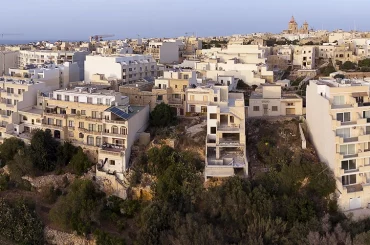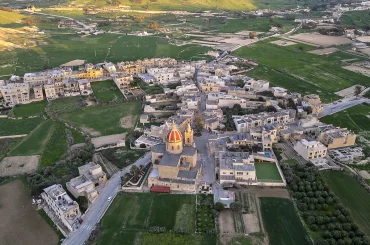It is hard to decide where to start – or how to start – when reporting on the coastal battery in Qbajjar, built by the Knights of St John in 1715. You could start with the decay of the interior – the additions of the 1980s when it was opened as a disco, furnishings and tiles and structural works, all deteriorating away – or the stones of its façade becoming loose, lopsided and crumbling.
You could start by pointing that the Planning Authority never escalated the infringement proceedings it initiated 23 years ago. Or you could start by delving into why 15 years has passed since the government promised to hand over the battery to Din L-Art Helwa, which describes itself as Malta’s national trust.
You could even start with the latest event: the music festival that will be held in the clearing (which normally serves a car park) in front of the battery this September, set to attract a mature, forty-plus party crowd from the UK.
Andrea Britton, the organiser, told this website that the battery will “make a fascinating backdrop.”

Britton, the creator of Gozo in the House website, said that she designed an itinerary for the festival-goers to enjoy “the island too.”
She added that she was “excited to introduce Gozo to people who I know will love and respect the island as much as I do.”
But the romanticism or evocativeness of the crumbling battery is tempered by the compelling need to renovate the battery to prevent further damage and, potentially, collapse.
Culture minister Owen Bonnici told parliament a month ago that the Superintendence of Cultural Heritage had approved the Qbajjar Battery’s custodianship agreement with Din L-Art Helwa and sent it to the Lands Authority.

The NGO has conducted studies, drafted plans, and secured permits and funds to renovate the battery.
The superintendence approved Din L-Art Helwa's renovation plans many months ago. So what is holding back the Lands Authority from formally handing custody to the NGO?
Six years have passed since a court case the previous lease-holders had filed has been declared “deserted” by the court.
The lawsuit had been filed by George Said, one of the owners of a company called Rook Ltd, which had the battery on temporary emphyteusis from 1981 to 2003.
The company had converted the battery into a disco called Rook, carrying out extensive works without a permit. The Planning Authority eventually initiated infringement procedures for the works in 1999 – the works consisted of extensions of the upper floor, use of concrete bricks, decorative pickaxing of walls, and removal of paving stones on the ground floor.

Eventually, on 7 September 2007 the government informed Din L-Art Helwa in a letter that it would evict Rook Ltd and hand over the battery to the NGO.
Then Said applied in court for a warrant of prohibitory injunction against the eviction on the basis of lack of fair hearing. The injunction was upheld – even though the legal basis was weak – and Said then filed a constitutional lawsuit.
The case dragged out, and nine years later the court declared the lawsuit “deserted”.
It is not known whether the precautionary injunction remains technically in force. If it were, it would be hard for Said to successfully plead an interest in maintaining the injunction.
Legal sources told this website that this means that, if the injunction remains in force, it would be a formality for the Lands Authority to get the injunction lifted.
Sustain Analyses & Insight
Robustly researched and professionally delivered analyses and insight features on this website take much time, effort, and resources to produce. This website's donation setup itself is uniquely transparent, with targeted amounts – of just €50 every month for analyses – that allow tracking of donations in real time on the page. Contribute as little as €5.




